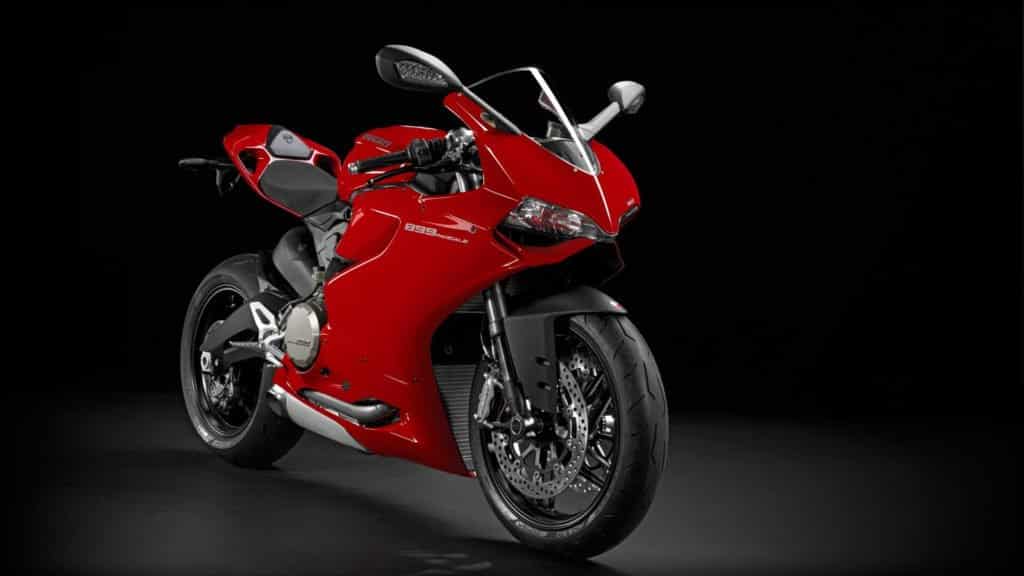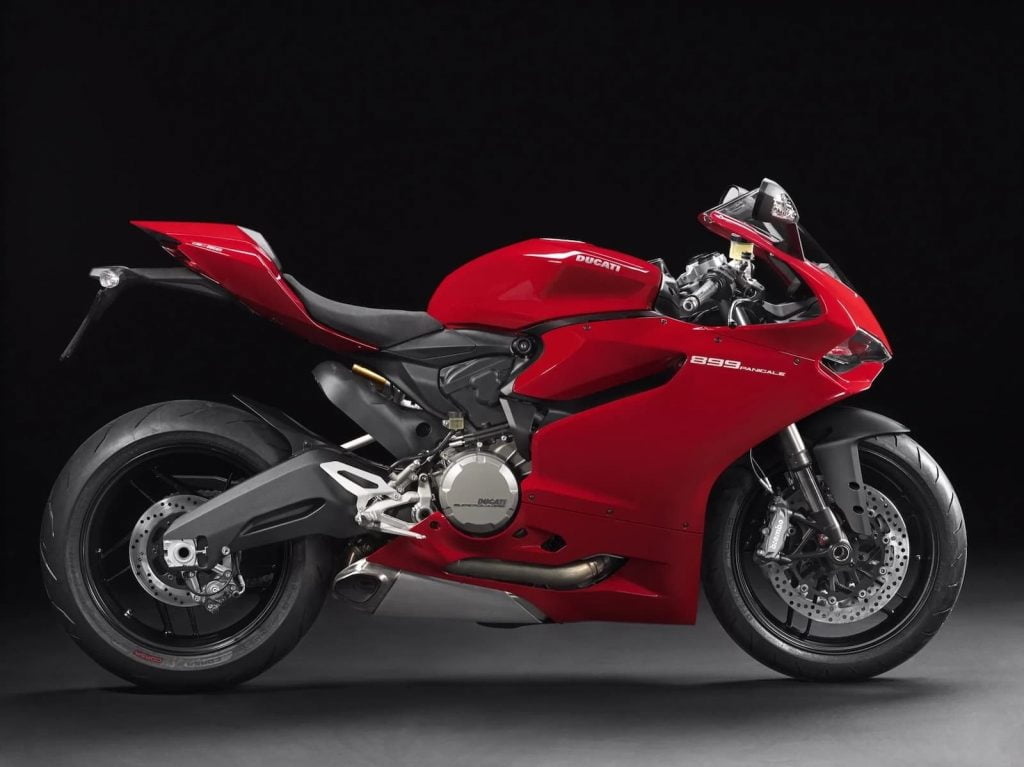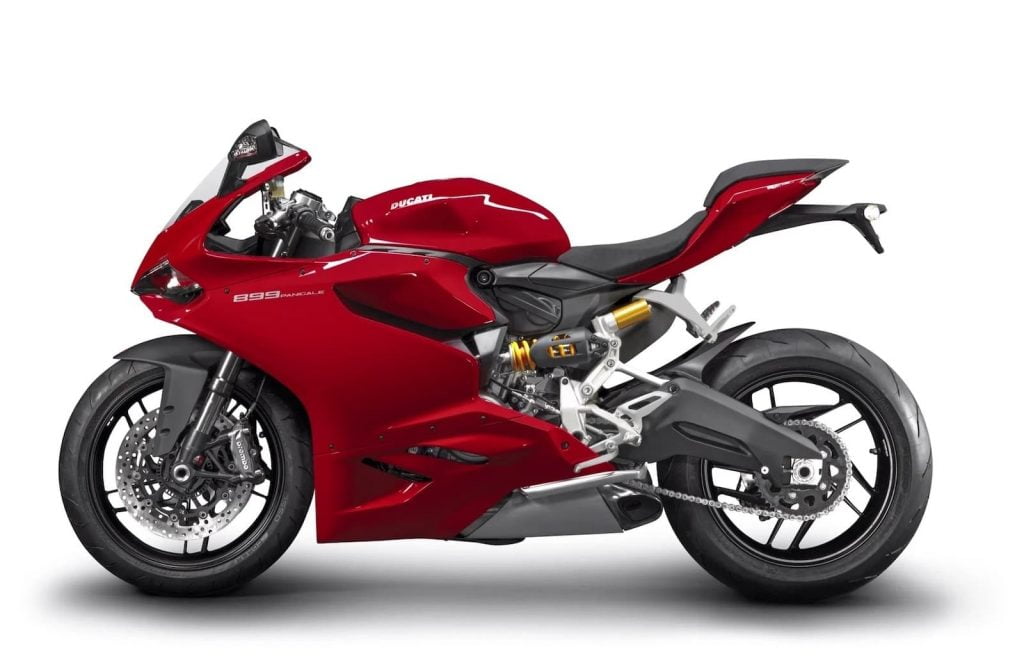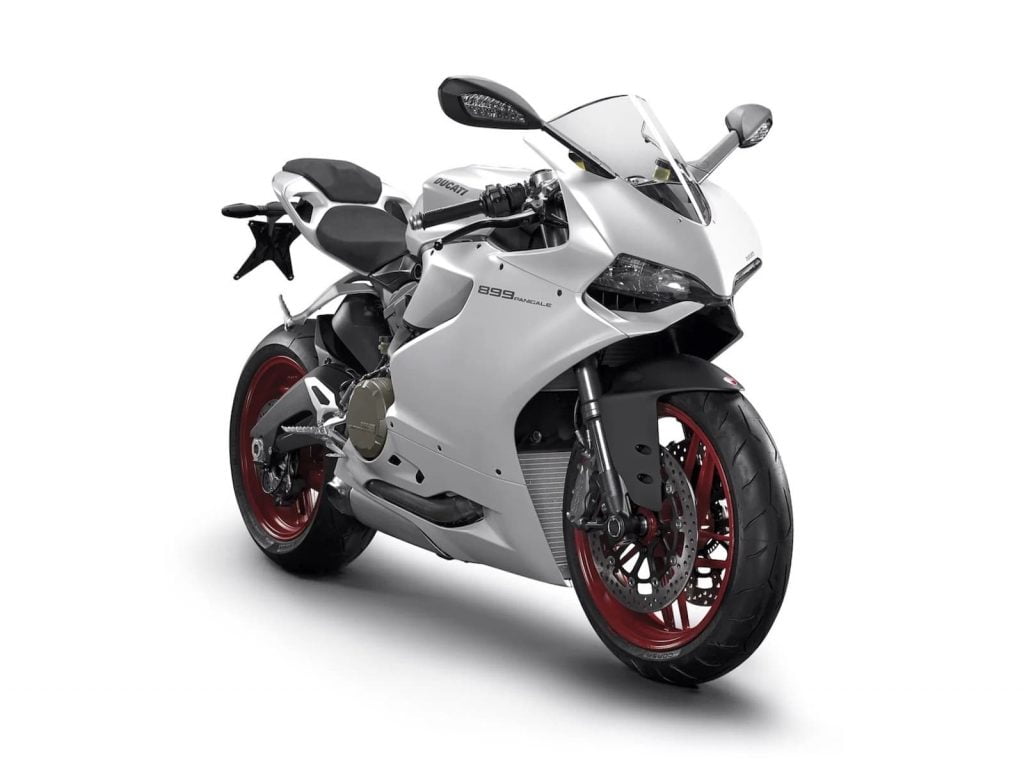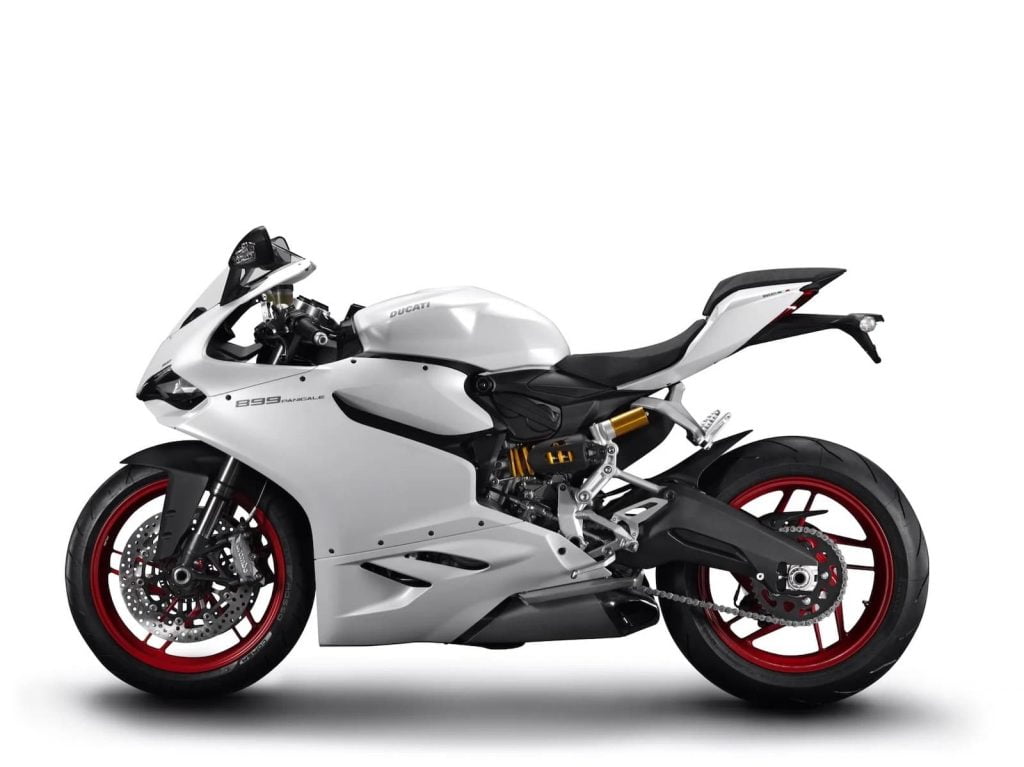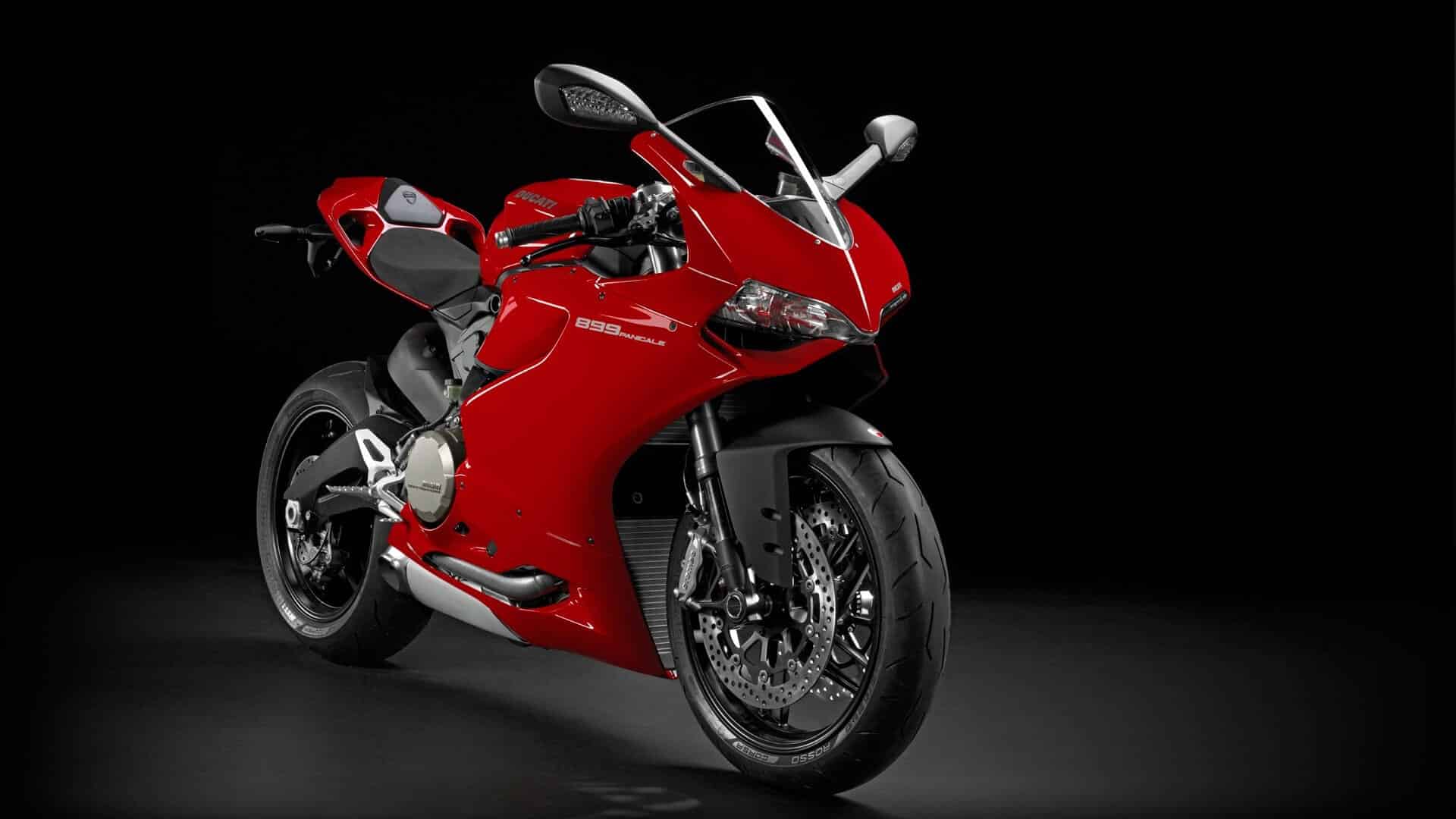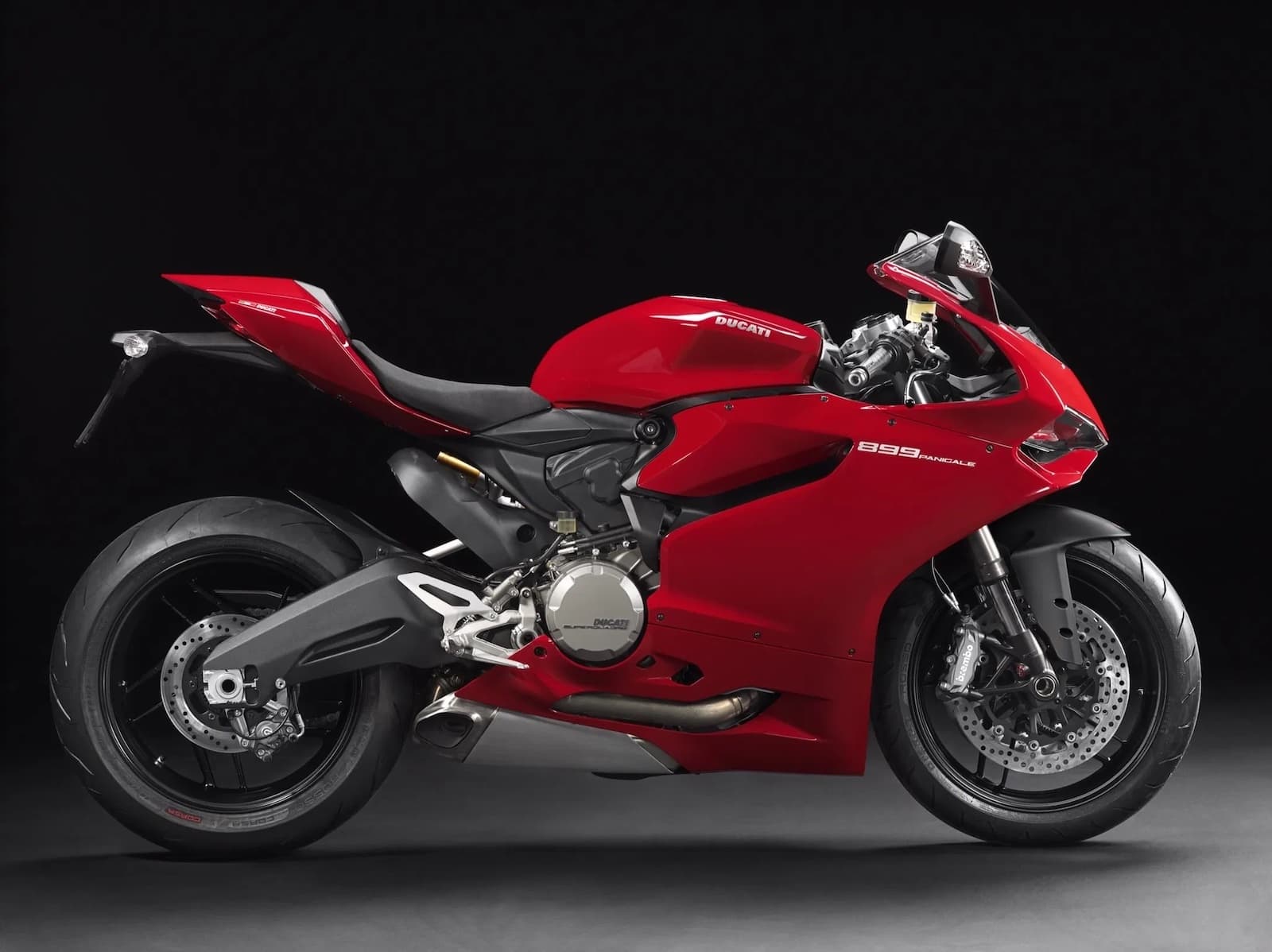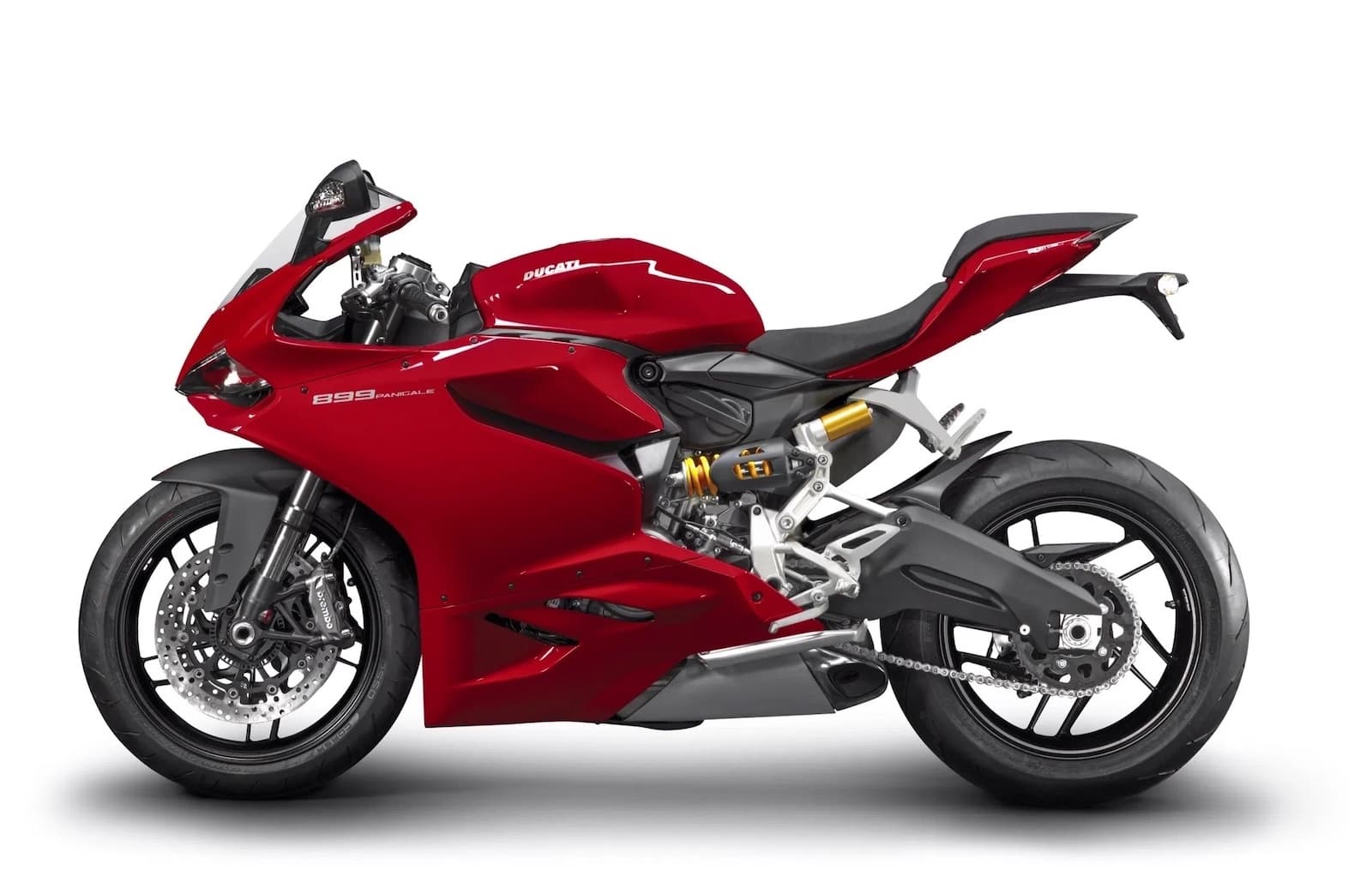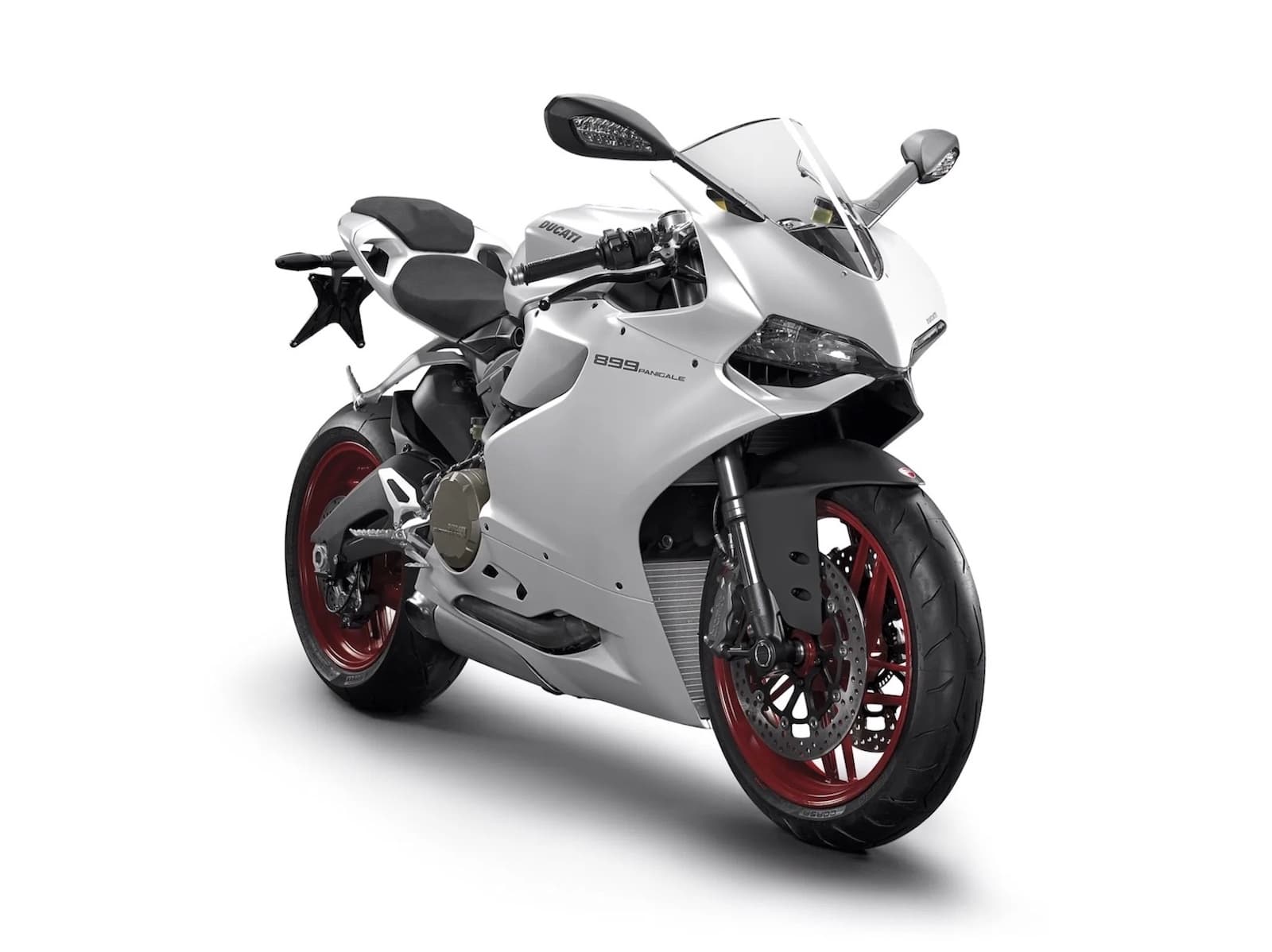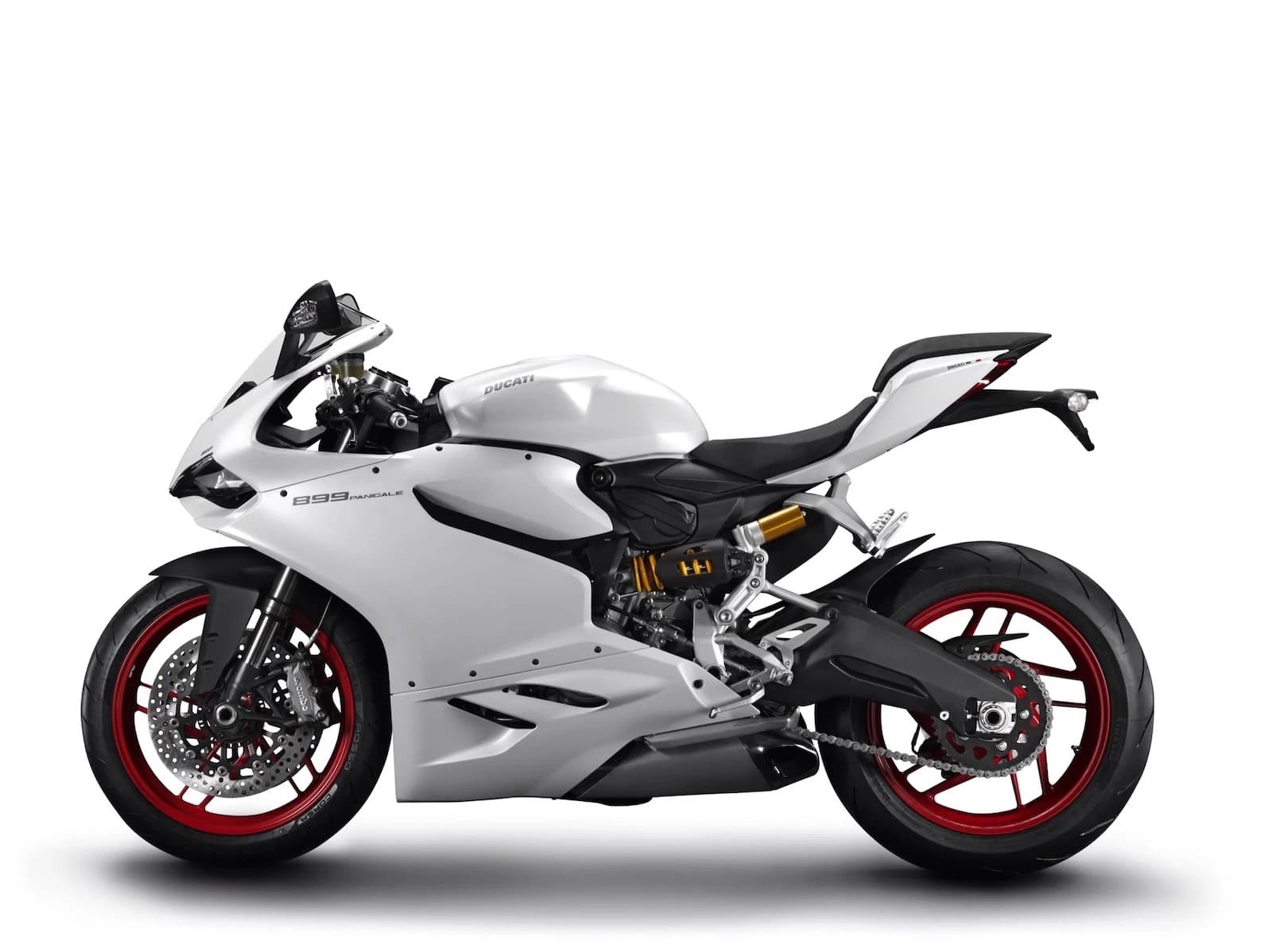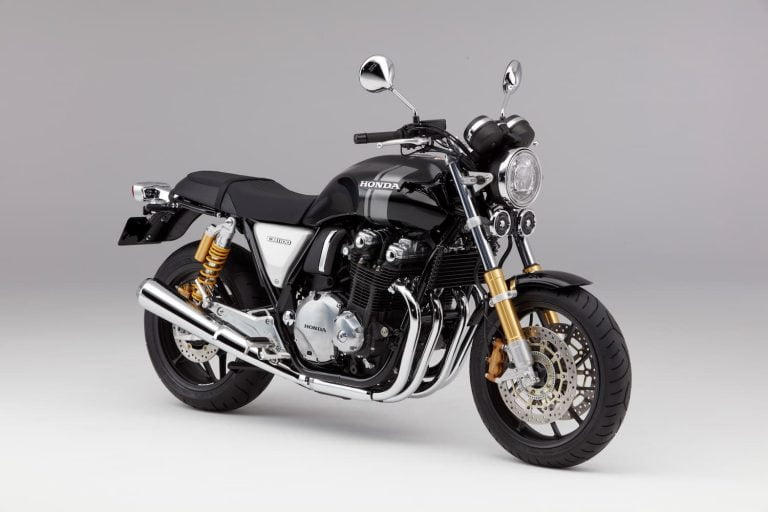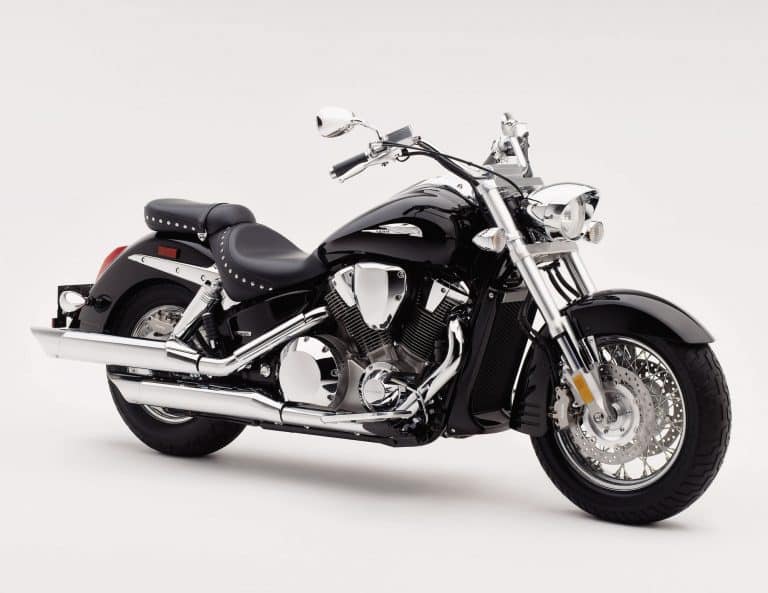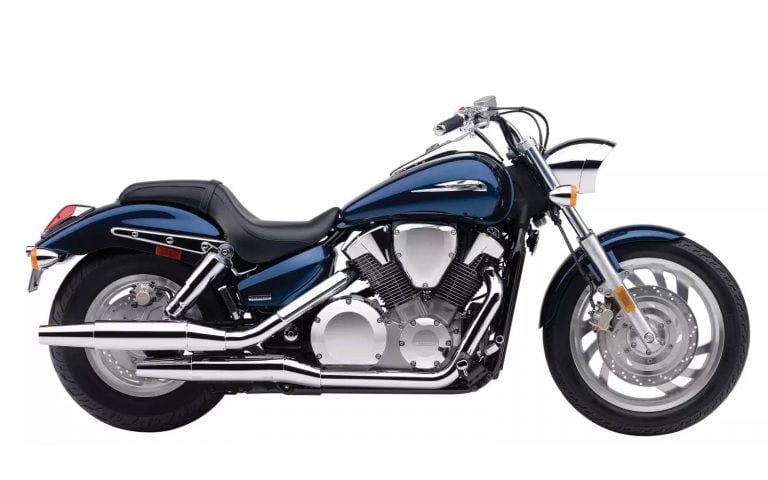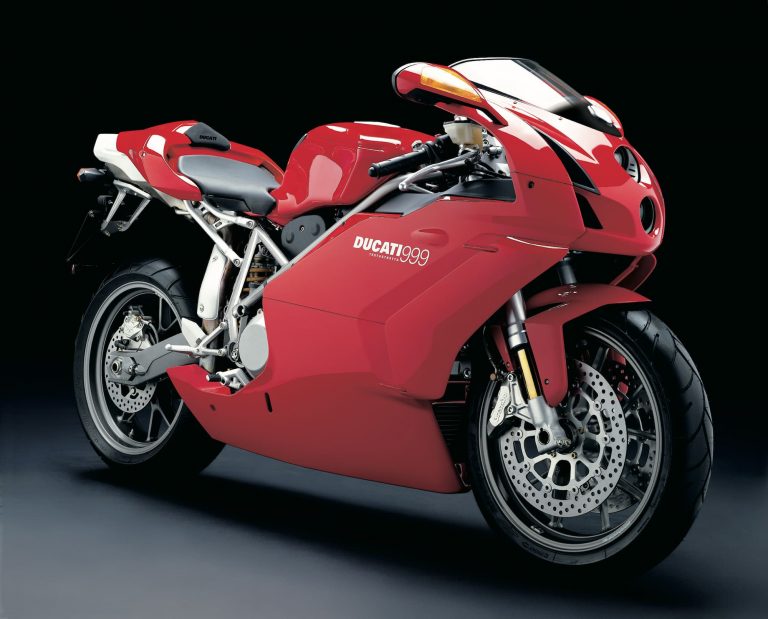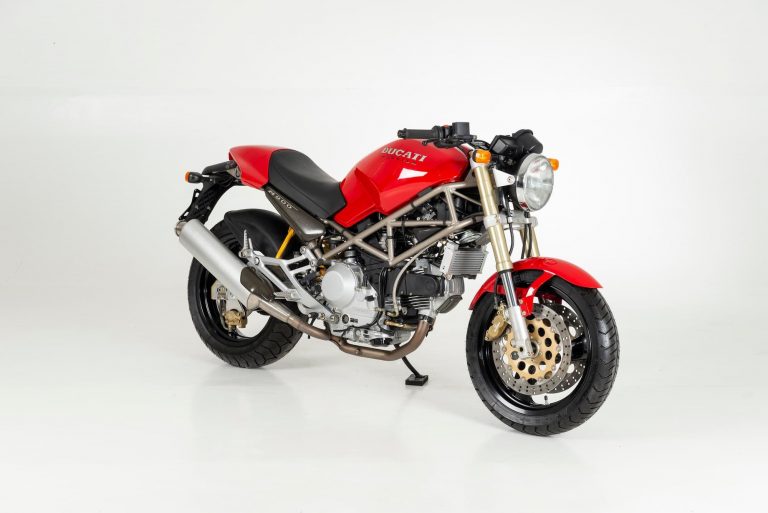Ducati 899 Panigale (2014-2015) Complete Maintenance Schedule
This is the maintenance schedule and service intervals for the Ducati 899 Panigale, Ducati’s middleweight sport bike.
This applies to both the 2014 and the 2015 Ducati 899 Panigale — the motorcycle didn’t change between the two years. From 2016, the 899 was replaced by (or upgraded to) the Ducati 959 Panigale.
The Ducati 899 Panigale is one of those extremely well-balanced middleweight sport motorcycles that doesn’t get enough recognition. It comes in one, standard version (no S, nor R). The 898cc Superquadro L-twin makes a healthy 110 kW (148 hp) at a not-too-high 10750 rpm, and peak torque of 99 Nm (73 ft-lb) of torque at 9000 rpm.
The maintenance schedule for the 899 Panigale bears some resemblance to other Ducati Superbikes, like the 1199 Panigale. Like the 1199, the 899 Panigale has 15 000 mile (24 000 km) valve service intervals.
One of my favourite things about the 899 Panigale — similar to the 1199 Panigale, and subsequent superbikes — is that it has a timing chain instead of a belt. You no longer have to adjust the cam (timing) belt tension or replace it periodically. Also, the valve service intervals are twice as wide as its predecessor, the Ducati 848 Superbike.
Updated October 2024 with chain tension alignment guidance, which isn’t in the owner’s manual.
This site has links for things like oil and spark plugs from which we earn a commission (which unfortunately nobody can save, not even us). If you appreciate this work, then please use those links. Thanks!
Ducati 899 Panigale Service Intervals
Like other Ducati liquid-cooled superbikes of its generation with the Superquadro engine, the Ducati 899 Panigale has 7 500 mile / 12 000 km or annual service intervals. At every service, change the oil and filter, and do a series of other checks.
The major “Desmo” service for the 899 is every 15 000 miles or 24 000 km. That’s the service at which you have to change the spark plugs and check the valve clearances. As it has a two cylinder, four valve per cylinder, Desmodromic engine, there are eight valves and sixteen clearances to check. In addition, an opener being out of spec often results in a closer being out of spec, too.
Luckily, the 899 represents a break from earlier Ducati superbikes in that it has a chain-driven timing system, not a belt-driven system — so there are no belt tensions to check.
Finally, the 899 Panigale has both clutch and brake fluid, so keep both fresh (as well as the coolant).
What you need to service the Ducati 899 Panigale
Luckily if you’re doing a service on the 899 Panigale you don’t need a single-sided swing-arm paddock stand! They’re a double edged sword. A regular paddock stand will do as part of the general motorcycle maintenance tools that you’ll need (and/or which will make your life easier).
Aside from that, for the 899 Panigale you need the following stuff.
| Part | Ducati 899 Panigale spec |
|---|---|
| Engine oil | Ducati recommends Shell Advance Ultra 15W-50 motorcycle oil for all its motorcycles, or alternatively “oil having the same degree SAE 15W-50 and meeting the following specifications JASO: MA2 and API: SM”. You need 3.4L for a complete oil change. A good high-quality option is Mobil 1 Synthetic 15W-50.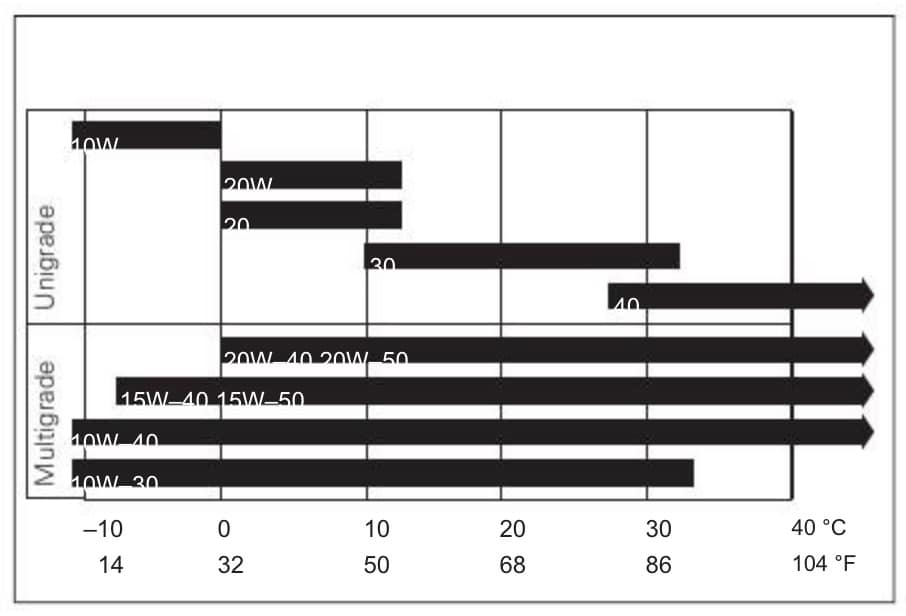 |
| Oil filter | Genuine Ducati oil filter part is 44440312B the Ducati Panigale motorcycles. You can also use a Hiflofiltro HF159 oil filter which can be changed with a normal wrench. |
| Brake fluid, Clutch fluid | Ducati recommends Shell Advance DOT 4, but that’s quite hard to find, so Castrol DOT 4 Synthetic is a good and very high-quality alternative. |
| Coolant | Ducati recommends Shell Advance Coolant or a 35-40% mix of Glycoshell, a Nitrite, Amine, and Phosphate-free coolant. An easy-to-obtain alternative that meets this spec is Pro Honda HP coolant. For track use, many prefer distilled water and Redline Water Wetter. |
| Timing belt | Congratulations, your Ducati Superbike has a timing CHAIN! (Sadly, this was replaced with a belt again in later models…) |
| Front brake pads | OEM part number for the front pads is 61340121A (for one pair). You can also use EBC FA630HH for more bite and less fade as you apply pressure. |
| Rear brake pads | OEM part number for the rear pads is 61340381A. You can also use EBC FA266HH for more bite and less fade as you apply pressure. |
| Air filter | Air filter part number is 42610491A. You can also use K&N part DU-1112. |
| Spark plugs | NGK code MAR9A-J. Note they’re sold individually. |
You also may need the following general consumables for servicing the Ducati Panigale.
| Description |
|---|
| Paddock Stand — Makes maintaining your chain or doing other maintenance much easier. |
| Motul chain paste — one of the most highly-regarded chain lubes. Easy to apply, doesn’t fling off. If you need more stuff, get the Motul chain care kit as an affordable package. |
| Always good to have on hand lithium soap-based grease for lubing external pivot points (like the swingarm) and bearings. |
| Use Protect all cable life to lubricate your cables and controls. |
Regular maintenance for the Ducati 899 Panigale
This is maintenance that you can do yourself (though the manual says you need a dealer to do these things).
Every 1 000 km / 600 miles OR 6 months (whichever comes earlier), perform the following maintenance:
| Ducati 899 Panigale — Regular Maintenance |
|---|
| Check engine oil level (top up with Mobil 1 Synthetic 15W-50) |
| Check brake and clutch fluid level (top up with Castrol DOT 4) |
| Check tyre pressure and wear |
| Check the drive chain tension and lubrication. (use Motul chain care kit to maintain) |
| Check brake pads. Replace if necessary (2x FA630HH for front, 1x FA266HH for rear) |
Ducati 899 Panigale Maintenance Schedule Table
The following is the list of maintenance operations and to be done on the Ducati 899.
We’ve split the maintenance schedule out into
- A schedule of regular major service items, and
- An inspection checklist.
Major Items Service Schedule
Notes on the maintenance schedule:
- The maintenance schedule is every 7 500 miles or 12 000 km OR 12 months — at any of those points, check to see what is due.
- Valve clearance intervals are every 24 000 km or 15 000 miles — a big upgrade from the previous Ducati 848 EVO Corse and its siblings!
- Most items have a distance or time interval. Observe the earlier of the two.
- The break-in service is omitted.
- This schedule is for road use. If you track it, you’ll have to service most things more regularly. A Ducati dealer can advise on what you should service more often.
| km. x 1000 | 12 | 24 | 36 | 48 | Every |
|---|---|---|---|---|---|
| mi. x 1000 | 7.5 | 15 | 22.5 | 30 | (months) |
| Perform Standard Inspection Checklist (see below) | ✓ | ✓ | ✓ | ✓ | 12 |
| Change engine oil and filter (Mobil 1 Synthetic 15W-50 + HF159RC) | ✓ | ✓ | ✓ | ✓ | 12 |
| Clean engine oil mesh filter at intake | ✓ | ✓ | |||
| Check and/or adjust valve clearance | ✓ | ✓ | |||
| Visual check for wear of the chain timing system | ✓ | ||||
| Replace the spark plugs (NGK code MAR9A-J) | ✓ | ✓ | |||
| Clean the air filter | ✓ | ✓ | |||
| Change the air filter (K&N part DU-1112) | ✓ | ✓ | |||
| Check the proper tightening of the clutch cover and clutch protection cover bolts | ✓ | ✓ | ✓ | ✓ | |
| Check the proper tightening of the oil sump bolts | ✓ | ✓ | |||
| Change brake and clutch fluid (Castrol DOT-4) | 24 | ||||
| Check wheel hub bearings | ✓ | ✓ | |||
| Check and lubricate the rear wheel shaft | ✓ | ✓ | 24 | ||
| Check the cush drive damper on rear sprocket | ✓ | ✓ | |||
| Check steering bearings and lubricate, if necessary | ✓ | ✓ | 24 | ||
| Change the front fork fluid | 36 | ||||
| Change the coolant (Pro Honda HP coolant, or Water Wetter for track use) | ✓ | 36 | |||
| Check secondary air system operation | ✓ | ✓ |
Standard Annual Service Checklist
Below is the standard annual service for the Ducati 899 Panigale.
Perform these items according to the schedule above. [Ducati] marked items require dealer specialist tools.
| Ducati 899 Panigale Standard Annual Service |
|---|
| [Ducati] Read the error memory with DDS 2.0 and check whether any update is available for control unit software version |
| [Ducati] Check whether there are technical updates and recall campaigns |
| Check brake and clutch fluid level |
| Check brake pads. Replace if necessary (2x FA630HH for front, 1x FA266HH for rear) |
| Check the proper tightening of brake calliper bolts and brake disc carrier bolts |
| Check front and rear wheel nuts tightening |
| Check the proper tightening of secondary drive front and rear sprocket nuts |
| Check chain sliders for wear |
| Check the drive chain tension and lubrication |
| Visually check the front fork and rear shock absorber seals |
| Check the freedom of movement and tightening of the side stand |
| Visually check the fuel lines |
| Check rubbing points, clearance, freedom of movement and routing of the flexible cables and electric wiring |
| Lubricate the levers at the handlebar and pedal controls with lithium soap-based grease |
| Check the coolant level |
| Check electric fan operation |
| Check tyre pressure and wear |
| Check the battery charge level |
| Check idling |
| Check the operation of all electric safety devices (side stand sensor, front and rear brake switches, engine kill switch, gear/ neutral sensor) |
| Check the indicators and lighting |
| [Ducati] Reset the Service indication through the DDS 2.0 |
| Road test the motorcycle, testing the safety devices (ex. ABS and DTC) |
| Clean the motorcycle |
| [Ducati] Fill out Warranty Certificate with service data |
Wheels and Tires
The Ducati 899 Panigale shipped with Pirelli Diablo Rossa Corsa tires. Below are the recommended tire pressures for everyday use. Adjust these to your preferences.
The manual for the 899 Panigale does recommend certain pressures for track use, though!
| Wheel | Wheel size | Tire size | Tire pressure (cold) (Street use) | Tire pressure (cold) (Track) |
|---|---|---|---|---|
| Front | MT3.50 x 17″ | 120/70 ZR 17 | 36 psi / 2.5 bar / 2.55 kPa | 33 psi / 2.3 bar / 2.35 kPa |
| Rear | MT5.50 x 17″ | 180/60 ZR 17 | 36 psi / 2.5 bar / 2.55 kPa | 30 psi / 2.1 bar / 2.14 kPa |
Chain Maintenance
Ducati recommends checking the chain slack regularly, every 1 000 km (600 mi) or six months, and more often if you track the motorcycle, or you clean it.
To check the slack on the 899 Panigale, put the motorcycle in neutral, onto its kickstand, and on a level surface. Wheel the motorcycle around until you find the tightest spot — the part where the chain is closest to the swing arm.
Slack on the Ducati 899 Panigale is defined as the distance between the centre of the chain and the swing arm.
Target chain slack for the Ducati 899 Panigale: 49 – 51 mm (1.93 – 2.01 in)
If the chain slack is out of spec, you need to adjust it.
Adjusting chain slack
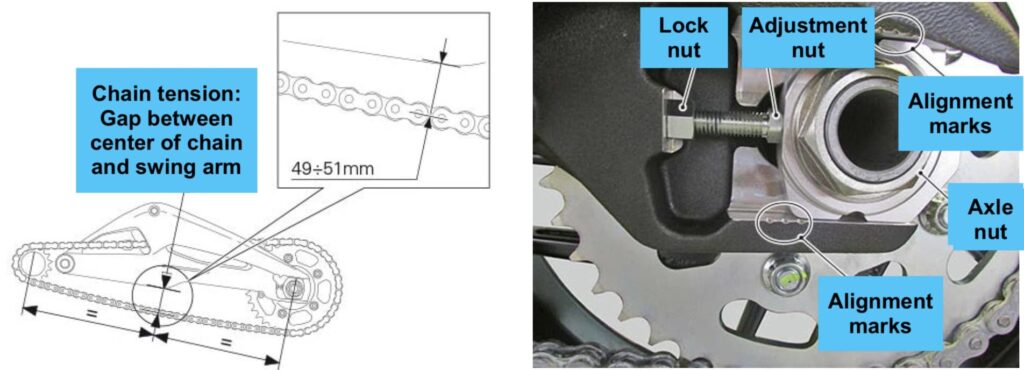
To adjust the chain slack on the Ducati 899 Panigale, follow the steps below. As when measuring slack, make sure that the motorcycle is on a level surface on its kickstand, in neutral, with no weight on it.
- Loosen the rear axle (you will need a breaker bar or impact wrench and a 36mm 12-point socket) and the adjuster lock nuts on either side of the axle.
- Turn the adjuster nuts to tighten (or loosen) the chain. Keep checking the chain tension to see if it has come within spec.
- Keep an eye on the adjuster alignment marks on either side of the axle. Make sure that the adjustment is to the same point.
- When you’re done, tighten the axle to 180 Nm / 133 lb-ft of torque with a large torque wrench
- Re-check the chain slack again to make sure it’s still within spec.
About the Ducati 899 Panigale
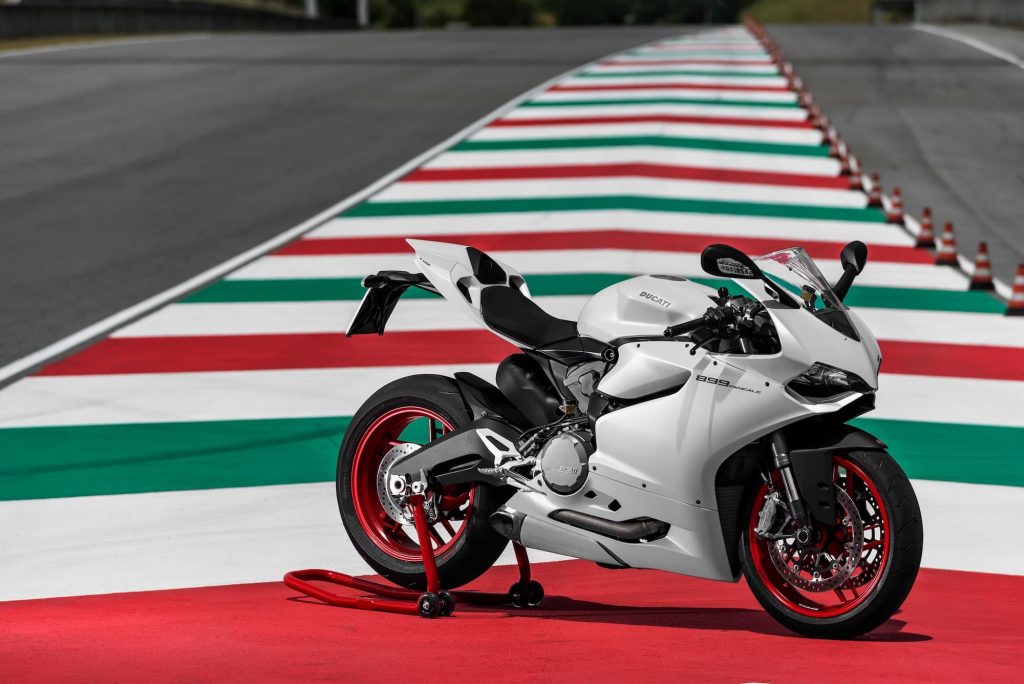
The Ducati 899 Panigale is a really special motorcycle that was only produced for a couple of years.
The smaller Panigale motorcycles in the Superbike range don’t get as much attention as the larger ones like the 1199, 1299 and so on. But they really deserve a look!
The 899 Panigale replaced the earlier Ducati 848 Superbike. It is pretty different, though. It isn’t just the larger engine (898cc vs the earlier 849cc), but the styling changes were pretty obvious too — re-introducing a double-sided swing-arm for the smaller “middleweight” Ducati superbikes.
Of course, this is no normal “middleweight” sport bike. The peak power of the Ducati 899 Panigale is 109 kW (148 PS / 145 bhp) at 10750 rpm, with a redline of 11500 rpm. The peak torque comes on earlier at 9000 rpm, with maximum value of 99 Nm (73 lb-ft).
So while being a “superbike”, the Ducati 899 Panigale has a powerband not unlike a mid-range sportbike like the Kawasaki Z900 — though with a few more horses up top.
The Ducati 899 Panigale also has a whole host of ride-by-wire rider aids, like traction control, ride modes, and ABS — but not yet cornering ABS (this would come in later motorcycles only, like the Ducati Panigale V2).
Ducati says that the engine brake control unit monitors deceleration under heavy braking and administers RbW throttle to maintain optimum grip (i.e. preventing it from braking traction).
The 899 Panigale is a very rideable superbike compared to the earlier, more raw 848. Even the later 959 Panigale is more aggressive. The wet weight of the 899 Panigale is only 425 pounds (a paltry 193 kg), which puts it in the same weight category as ultra-light superbikes.
Part of what makes the 899 Panigale so easy to ride is the gearing. It has a 15:44 front:rear sprocket ratio, with a first gear ratio of 15/37. The peak torque plateau is between around 7000 and 11000 rpm, which means between around 70 and 110 km/h (or around 45 and 70 mph) in first gear. Being able to shift in the meat of the torque band before getting to “illegal everywhere” speeds is entertaining.
Even though there’s no S or R version of the 899 Panigale, the suspension is already decent spec. The front suspension is taken care of by 43mm Showa BPF with full adjustability — pre-load, and compression and rebound damping. The rear shock is a Sachs fully adjustable shock. This is a similar setup to what was on the Ducati 848 superbikes before the Corse.
Front braking is via a 320mm rotor with Brembo M4.32 4-piston calipers, which are fairly standard spec for middleweight high-end sportbikes.
All in all, the Ducati 899 Panigale is a very competent middleweight superbike that would have many wondering why they’d ever need a full literbike — unless, of course, you have to have the very best.
Reference — Ducati 899 Panigale Owner’s Manual
The above info was sourced from the owner’s manual for the Ducati 899 Panigale.
You can download it from the Ducati website here.
An archive copy of the manual is also available here.
If you’re looking for the service manual, the 899 Panigale forum has it here.
